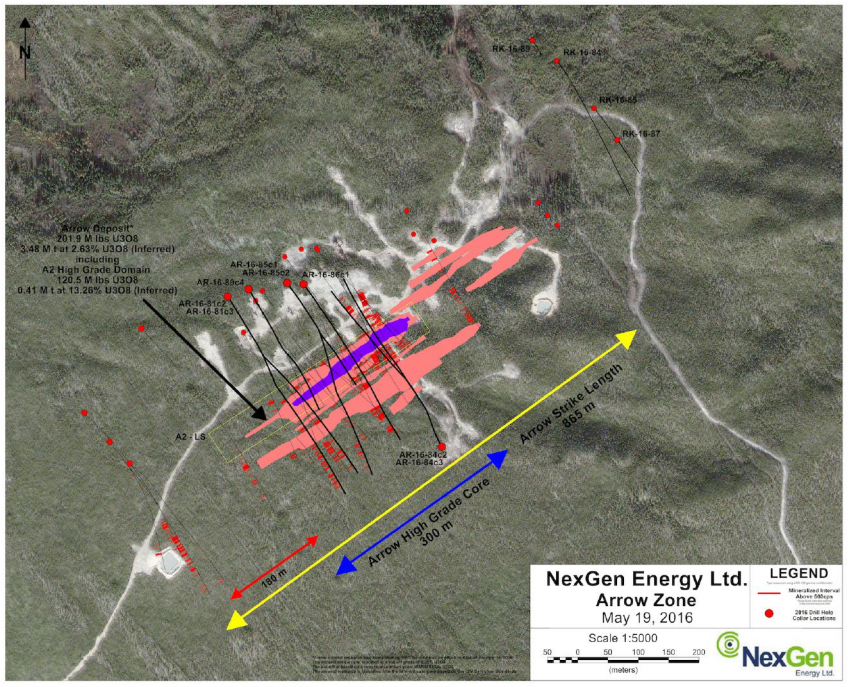Within the A1 shear, the high grade mineralized interval from hole AR-16-84c1 (8.35 m of off-scale radioactivity with assays pending – see News Release dated April 14, 2016) has been confirmed and expanded with two further drill holes. This is highlighted by hole AR-16-84c3 which was drilled 33 m down-dip and southwest of -84c1 intersected 35.5m of total composite mineralization, including 2.6 m of total composite off-scale mineralization. This new area of high grade mineralization in the A1 shear is well outside and not part of the maiden Arrow deposit resource estimate that only includes drilling up to October 2015.
Drilling has also continued to confirm the robust nature of mineralization in the A2 shear where drill holes AR-16-80c4, -81c3, and -86c1 all individually intersected more than 10 m of total composite off-scale mineralization. There is significant potential for expansion of the A2 high grade domain around each of these holes, and substantial massive to semi-massive uranium mineralization was intersected and remains wide open up dip and southwest from hole AR-16-86c1 in the higher grade A2 sub-zone (the “Sub-Zone”).
Hole AR-16-86c1 returned the largest total composite mineralization to date across the A2 to A4 shears. It was drilled at the currently defined southwest extent of the Sub-Zone intersecting 92.0 m of total composite mineralization in the A3 shear, and 246.0 m of total composite mineralization throughout the entire hole.
Within the A4 shear, 3.6 m of off-scale radioactivity has been intersected in drill hole AR-16-86c1, which is a 19 m step out down-dip from hole AR-16-76c1 (1.97% U3O8 over 28.0 m in the A4 shear – see News Release May 5, 2016).
Read the hightlights in the press release NexGen – Arrow Update here.
REGIONAL DRILLING
Throughout the Winter 2016 season the Company completed eight holes regionally on the Rook I property in three areas. No mineralization was intersected.
Holes RK-16-84, -85, -87, -89 were drilled as a fence approximately 190 m along strike to the northeast of the Arrow resource grade shell. Each of the holes intersected highly prospective structure and/or alteration and the area remains prospective at depth.
Hole RK-16-94 tested the termination of the VTEM conductor approximately 1,000 m southwest of the Bow discovery. Intermittent and locally strong clay, chlorite and hematite alteration was encountered throughout the basement.
Holes RK-16-95 through -97 were drilled as a fence to test a near coincident circular gravity low and VTEM conductor break between the Arrow Deposit and the Cannon area. Again each of the holes intersected highly prospective structures and/or alteration.
